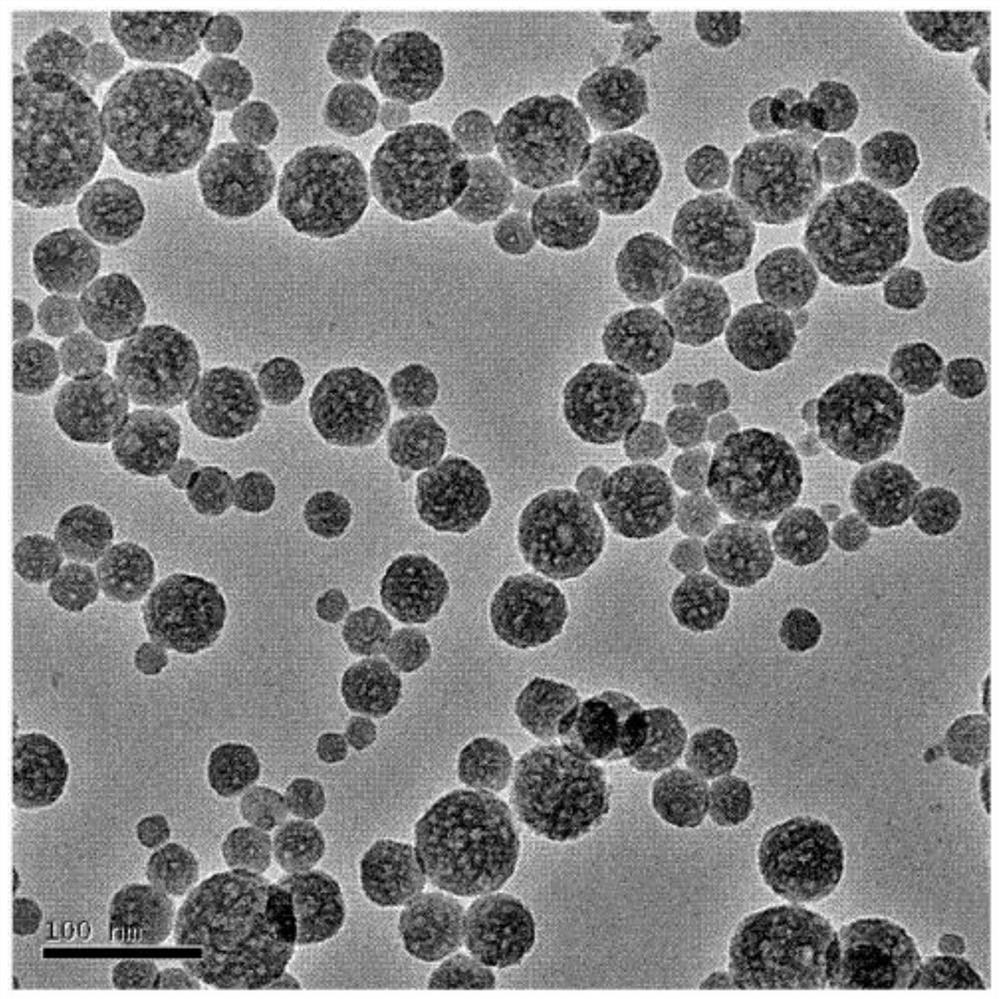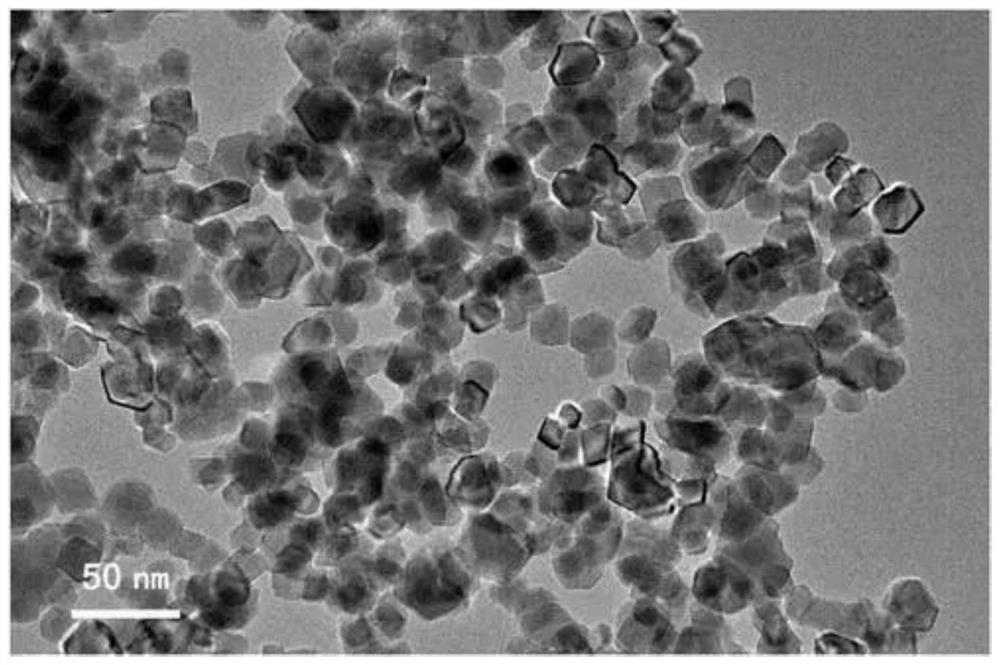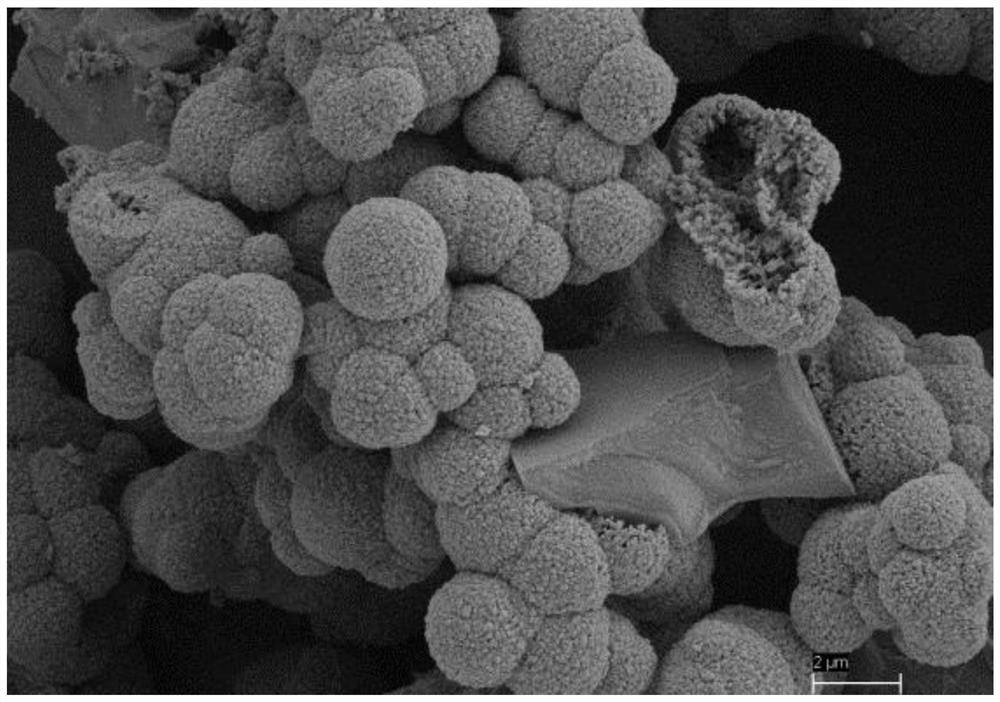Preparation of Nano-Alkali Metal Carbonate and Its Application in the Preparation of Poly(aryletherketone)
A technology of alkali metal carbonate and aryl ether ketone, applied in the direction of alkali metal carbonate, alkali metal compound, nanotechnology, etc., can solve the problem of low reaction activity of nanometer calcium carbonate, and achieve simple operation and low cost. Effect
- Summary
- Abstract
- Description
- Claims
- Application Information
AI Technical Summary
Problems solved by technology
Method used
Image
Examples
Embodiment 1
[0097] Embodiment 1 prepares nanometer potassium carbonate
[0098] First, weigh 10g of potassium carbonate, dissolve it in 100ml of distilled water to prepare a potassium carbonate solution, then take 5g of nano-titanium dioxide and add it to the prepared potassium carbonate solution, stir and mix at a high speed with a stirrer, and then add 5g of nano-titanium dioxide to the mixed solution. Add 0.2g of polyethylene glycol, stir for 15 minutes, add 0.3g of 4,4'-oxobisphenylsulfonyl hydrazide as a high-strength foaming agent to the mixed solution, stir until a large number of bubbles exist stably, and a large amount of Bubble liquid film, potassium carbonate crystallizes on the liquid film interface, and then these stable bubbles are spread on a tray and placed in an oven at 56-891 ° C for 12 hours. Finally, the obtained dried product is slightly ground to obtain potassium carbonate particles with nanometer size, the particle size is close to spherical, and the diameter is in ...
Embodiment 2
[0100] Embodiment 2 prepares nanometer sodium carbonate
[0101] First weigh 10g of sodium carbonate, dissolve it in 100ml of distilled water to prepare a sodium carbonate solution, and then take 2g of nano-iron trioxide Fe 2 O 3 , and add it to the prepared sodium carbonate solution, stir and mix at high speed with a stirrer, then add 0.05g of polyoxyethylene to the mixed solution, stir for 15 minutes, and add 0.08g of high-strength foaming to the mixed solution. agent 4,4'-oxobisbenzenesulfonylhydrazide, stir until a large number of bubbles exist stably, at this time a large amount of bubble liquid film is formed, and sodium carbonate crystallizes on the liquid film interface, and then these stable bubbles are spread on the tray, Dry in an oven at 56-851°C for 12 hours. Finally, the obtained dried product is slightly ground to obtain nanometer-sized sodium carbonate particles, the particle size of which is close to spherical, and the diameter is in the range of 1-2000 nm. ...
Embodiment 3
[0105] The preparation and purification of embodiment 3 hydroquinone disodium salt (using the nanometer sodium carbonate prepared by embodiment 2)
[0106] Preparation: Put a 500ml three-necked bottle in a thermostat electric heating mantle, insert a stirring paddle into the middle port, connect the thermometer and high-purity nitrogen to the tee on one side port, and connect the spherical condenser tube to the other side port. Weigh 184.18g (2mol) of glycerol into the there-necked flask, weigh 110.1g (1mol) of hydroquinone and 127.188g (1.2mol) of nanoscale Na 2 CO 3 Put it into a three-necked bottle, feed high-purity nitrogen to a flow rate of 200 ml / min, heat until the hydroquinone is melted, and turn on the stirring paddle to a stirring speed of 85 rpm. When the temperature was raised to 220°C, the temperature was kept constant for 1 hour, the reaction was completed, and the mixture was cooled to room temperature under the protection of nitrogen at a flow rate of 200ml / mi...
PUM
| Property | Measurement | Unit |
|---|---|---|
| tensile strength | aaaaa | aaaaa |
| diameter | aaaaa | aaaaa |
| particle size | aaaaa | aaaaa |
Abstract
Description
Claims
Application Information
 Login to View More
Login to View More - R&D
- Intellectual Property
- Life Sciences
- Materials
- Tech Scout
- Unparalleled Data Quality
- Higher Quality Content
- 60% Fewer Hallucinations
Browse by: Latest US Patents, China's latest patents, Technical Efficacy Thesaurus, Application Domain, Technology Topic, Popular Technical Reports.
© 2025 PatSnap. All rights reserved.Legal|Privacy policy|Modern Slavery Act Transparency Statement|Sitemap|About US| Contact US: help@patsnap.com



